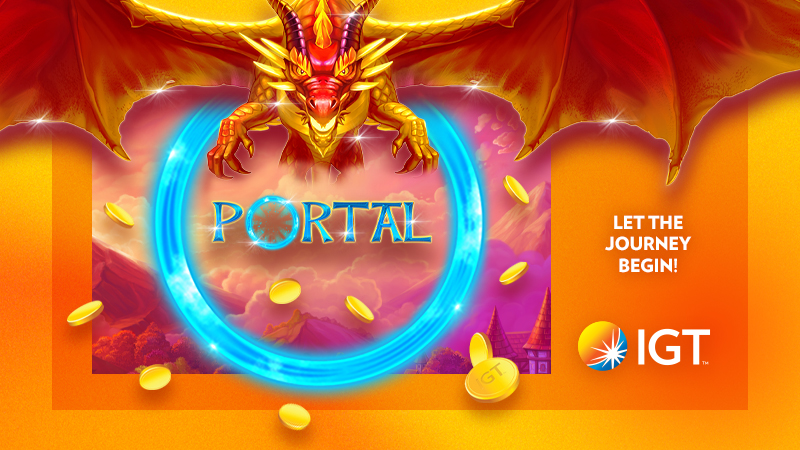5 MUSTS MARKETERS WILL NEED TO NAVIGATE IN A POST-COVID WORLD
As COVID-19-related restrictions ease across the country, life restarts in an altered form – transformed by social distancing, public transport restrictions and drastically altered office and social environments. Here are a range of thoughts from Australian marketers, business leaders and analysts all sharing their predictions on navigating the ‘new normal’ of the post-COVID environment.
Defining a safe brand message
Futurist and author, Mark Pesce, firmly agrees with the assertion ‘every business will now be a health business’ by New York University professor of marketing, Scott Galloway. According to Pesce, brands with a public face will need to express their ‘cleanliness credentials’ to help reduce people’s unease, and we can expect to see the rise of new positions such as chief health officer or chief biosecurity officer from now on.
There are several issues which pose challenges for business and society coming out of the pandemic, Pesce says, whose latest June 2020 Horizons report takes into account the effect of COVID-19. Time will tell the size of financial support needed to restart the economy, he argues, and we will continue with uncertainty about a second wave of virus infections for some time to come.
Additionally, the likelihood of a vaccine and its timing raises huge questions. The largest unknown is the extent of the aftershocks from this huge jolt of uncertainty that’s been inserted into every system, organisation and government around the world, he says.
Re-imagining what could be
Sendoso CMO, Dan Frohnen, sees the new challenges as being around re-imagining what can and should be.
“This hybrid world will be with us at least to the end of 2020 and potentially the first half of 2021,” he tells CMO. “This means we must look long and hard at our customer acquisition strategies and prepare for the long haul.
“It means being focused on being operationally efficient with teams and budgets, and honing in on the best motion to acquire and retain customers. We will do this in a world where our prospects will be working from home and sometimes in an office. And we’ll be doing this with limited business travel and no events.”
Navigating the new environment will see many companies fall that weren’t able to adapt, whether that is because of their product offerings or messaging or a combination, Frohnen continues. “You will see a whole new wave of start-ups emerge to fill gaps that come as a result of this pandemic.”
Mable CMO, Emma Howe, predicts it will take some time for people who are more vulnerable to COVID-19 to feel comfortable in returning to regular social and community activities.
“At the same time, with an extended period of isolation the need to re-connect will only get stronger,” she said.
Howe also predicts constant innovation will continue to be the biggest challenge and opportunity for marketers across the country, along with a hope for a continued sense of collective help. “The ability to move quickly from messaging and product launches is a huge advantage during these times and will continue to be into the future,” she adds.
“We’re hoping to see more of what we’ve seen during the pandemic – more people offering support to those in need, more companies disrupting their fields to meet category concerns and continued closeness and connection despite geography and other challenges.”
Planning for multiple scenarios
It’s already clear the coronavirus pandemic will accelerate and redirect business and societal changes. The rapid and wholesale adoption of work from home and the need for digital transformation are just two that are already apparent.
These new ways of working and living present challenges to business looking to understand and navigate such change. To survive and thrive over the next 3-5 years, leaders will need to consider multiple different scenarios which may eventuate in order to make sense of things, according to a an April 2020 Salesforce and Deloitte report, The World Remade by COVID-19.
The report highlights five fundamental uncertainties: The overall severity of the pandemic and pattern of disease progression; the level of collaboration within and between countries; the healthcare system response to the crisis; the economic consequences of the crisis; and level of social cohesion in response to the crisis.
It recommends taking a scenario planning approach to developing a plan in the next few years and considering how prospects may alter, changing consumer value, updating business threats, finding new providers and ecosystems, and looking for the capabilities and assets important in the new environment.
Sefiani Communications Group CEO, Robyn Sefiani, tells CMO many companies have already commenced major transformation initiatives, triggered as a result of revenue pressures caused by business disruption during the pandemic and to protect ongoing profitability.
Asked about the lasting changes that may come from the crisis, Sefiani nominates the need for reliable information and the notion of connectedness as two key ones.
“Australians have impressively followed the rules of social distancing and staying home when the facts and consequences were repeatedly presented simply, clearly, often and forcefully,” Sefiani says. “Trusted sources have emerged in government, health authorities and mainstream (objective) media. People hopefully have become more alert to misinformation and wild advice circulating on social media.”
Sefiani also points to the theme of connectedness, which has become more valued, “because we don’t appreciate what we have until it’s taken away”.
“I think we’ll see marketers leverage the emotional aspects of connectedness in the year ahead, with campaigns less about ‘me’ and more about ‘us’,” she says.
“The future of work will change too. People have embraced technology and adapted well to working from home, despite being isolated, and have enjoyed connecting with their families instead of lengthy commutes – no doubt requests for more flexible work arrangements will mean smaller office spaces are required in the future with implications for commercial property.”
Engaging fully virtual consumers
Google VP of global ads marketing and former Calvin Klein marketing chief, Marie Gulin-Merle, sees brands quickly learning about the new “at home consumer” and their changing experience of time and space.
“Time – which previously felt regimented and in short supply – is now more fluid,” she wrote in a recent consumer insights newsletter, Think with Google. At the same time, the at-home consumer is experiencing work and leisure and “blurring the clear separation between the home and business spheres”.
These numerous profound shifts in how people experience day-to-day life have created a “dynamic reprioritisation of the how, when, where and why of consumption,” Gulin-Merle stated. “They necessitate a rethink – from marketing to the needs of consumers to marketing to the needs of at-home consumers.”
Segment VP of product and demand generation, Katrina Wong, believes COVID-19 has brought an empathy lens to marketing, and that’s unlikely to disappear after the pandemic.
“Marketers will also be held more accountable than ever. The ability to measure return on investment already exists, so that won’t change; however, the bar will be higher than ever before when it comes to marketing’s ability to deliver measurable results,” Wong says.
Looking down the track, Wong predicts that as consumers embrace new behaviours and form new habits, marketers will have to stand out with digital offers, digital engagement and be more creative with experiences that differentiate their brands.
Longer term, marketers need to develop new ways to engage with a more home-based audience. “There will also be a continued rise of self-generated content from influencers, and many more influencers of all generations. Take TikTok for example – once for gen Z [teens], we now see some of the most heartwarming multi-generational family video stories on this platform,” Wong predicts.
Targeting virtual audiences may be more of a challenge but presents new opportunities with the right approach, according to Tableau Software senior marketing manager, Neridah Edwards.
“Many companies will have more of a connected audience than ever before and the clever use of data insights may provide for a better return on investment in targeting an audience than the traditional trade show or event of the past,” Edwards tells CMO.
“Rich data insights will provide a fantastic opportunity for marketers to harness in order to pinpoint audiences and support program innovation. These new virtual relationships will support the requirement for high-value content personalisation to support a strong return on investment.
“At the same time, demonstrating an understanding of customer challenges and providing the right resources at every stage of the buying journey will be the key to turning interest into action.”
Attivo Networks CMO, Carolyn Crandall, agrees marketers now have a unique opportunity to try new things and increase focus on improving current digital program activities.
“Many of these come at low to no external cost,” she says. “Some of these opportunities will include creating and updating targeted and nurture campaign logic and conditional rules, doing more with webinars and online forums, video on-demand and podcasts, updating SEO and retargeting campaigns, writing bylines and blogs, to name.”
Cutting through, but having a message that recognises the new environment, will be the challenge in the post-covid world, according to Nintex CMO, Dustin Grosse, who told CMO organisations will need to prepare for lasting change, despite the uncertainty about what those new norms will look like.
“To cut through the noise and be relatable in a new world of work, organisations will be challenged to position their outreach efforts to prospects and customers in a way that is sensitive to the post-pandemic world,” he continued.
“Old messages in a new environment will fail and tolerance levels for marketing that isn’t authentic, human and relevant is at an all-time low. People want to know: why is this relevant to me, and why is it relevant to me right now?”
A digital-first mentality
A recent Brandwatch study noted the main problem with online shopping is delivery, with its consumer research finding a rise in customer complaints in March and April compared to January and February. In the new normal, a digital-first approach will need to address delivery as well as stock availability to avoid unnecessary hitches and bottlenecks, experts believe.
Success will also be reliant upon harmonising online, mobile and app platforms. Klarna Australia GM, Fran Ereira, sees the disruption of COVID-19 putting pressure on local retailers to find new strategies to attract consumers in light of stiffer competition, market uncertainty and fluctuating consumer spend.
“Globally, research is increasingly suggesting that online shopping will overtake retail sooner than predicted, with bricks and mortar stores moving from a transactional to inspirational approach,” Ereira says.
Digital-first brands that move into physical retail could also turbo-charge their brand affinity among consumers who are still primarily driven by convenience when shopping online. In addition, brands will need to offer more flexible payment and delivery options to meet consumer expectations and ensure conversion if optimised.
“And mobile will dominate so if a retailer’s strategy is not mobile-first then they could be in trouble with shopping on social media to continue to increase,” Eriera says. “Brands need to ensure their marketing plans address the changing needs of consumers and deliver messages in the places their customers are spending time.”
Putting aside the tremendous uncertainty caused by the coronavirus’ impact on business generally, BlackLine CMO, Andres Botero expects marketing to become even more pivotal to the bottom line.
“We’ll see more effort providing unique and differentiating customer experiences, while capturing and analysing more data to learn more about our customers’ needs and pain points,” he says. “This will help cultivate a continuing relationship that strengthens their loyalty.”
NEC executive general manager, brand and customer experience, David Borean, believes marketers will need to be thinking about how customers engage in future work practices. “The notion of a customer’s work environment and the way that they work has really changed,” he says.
“What remains true is we need to be very present with them. We need to be helping them through the challenge which may be much greater and longer in terms of its forward focus than we had imagined. And coming out of this will be many months and so we’re looking at consistent messages in terms of support.”
Finally, the pandemic could also usher in more virtual events as large-scale conferences and other in-person meetings can’t happen because of social distancing and venue limit requirements. Patreon senior events marketing manager, Jane Kwett, told CMO in-person events, when they do restart, will be smaller like roundtables, and we may not see the return of the massive conferences, at least for some time.
And technology will create innovation in events too. “Virtual reality events and conferences, and the tools to connect virtually, are going to improve tremendously. And they have to. We’ll see how technology develops in that regard,” she adds
Source: By Rosalyn Page – https://www.cmo.com.au/article/680278/5-musts-marketers-will-need-navigate-post-covid-world/?













